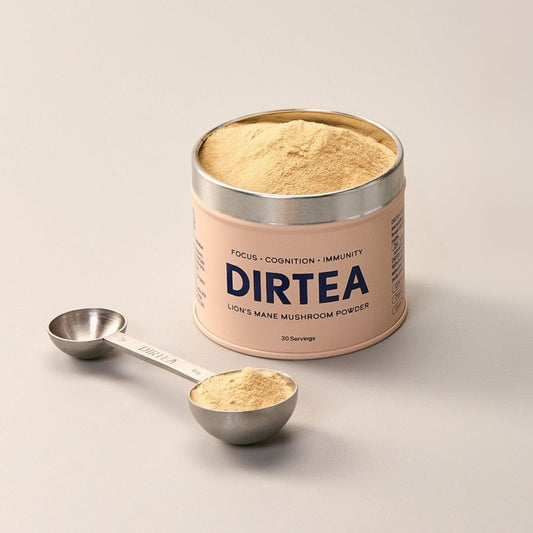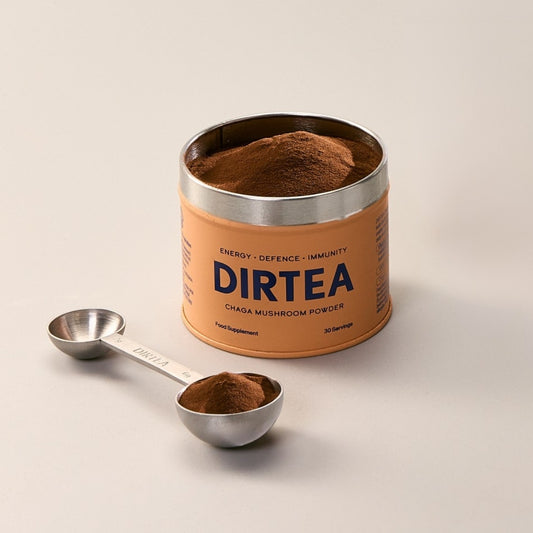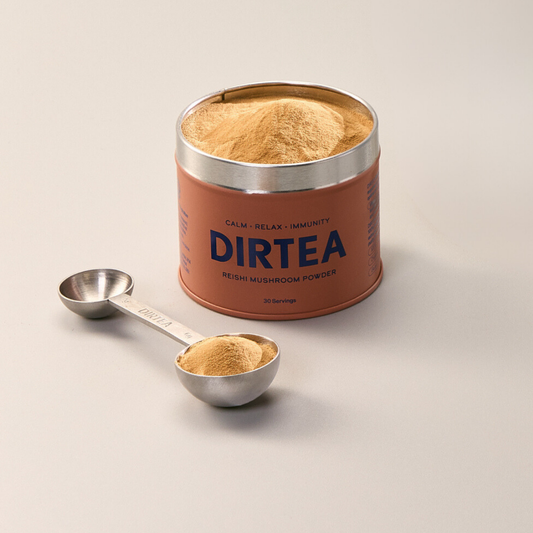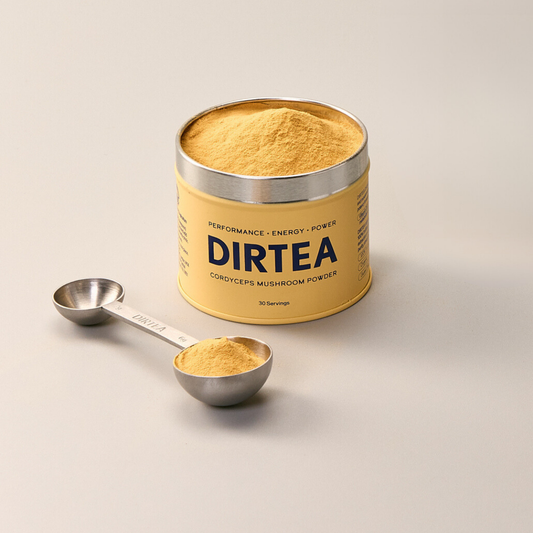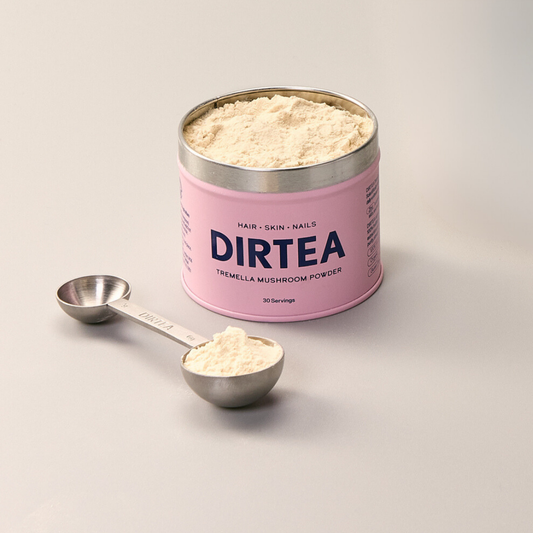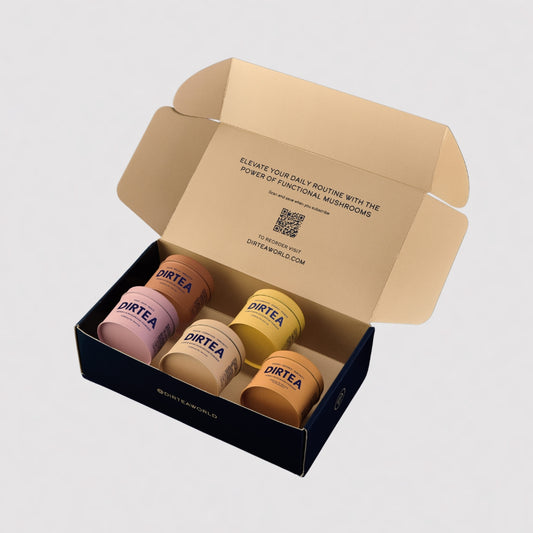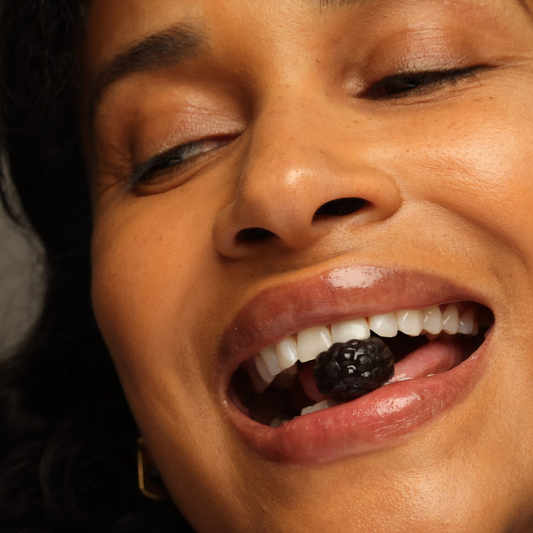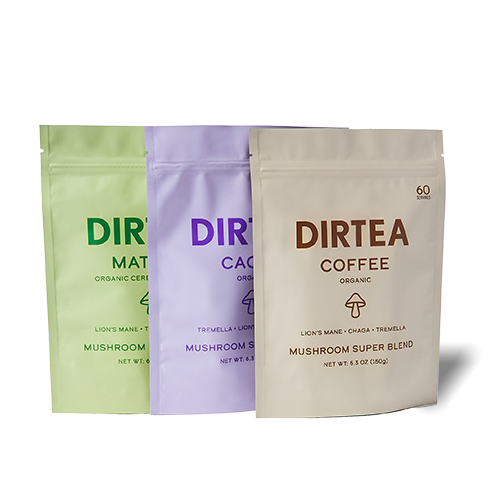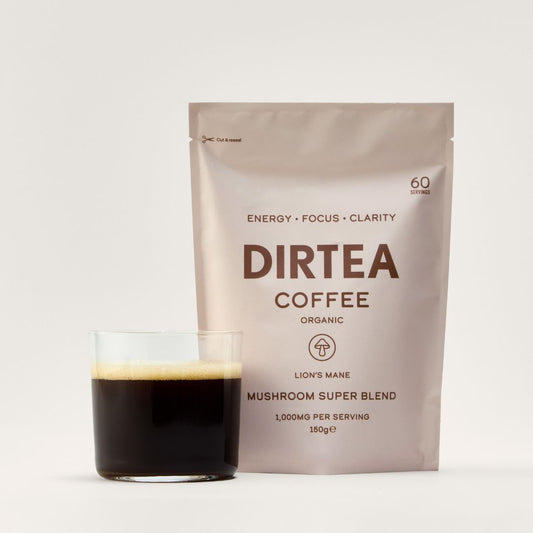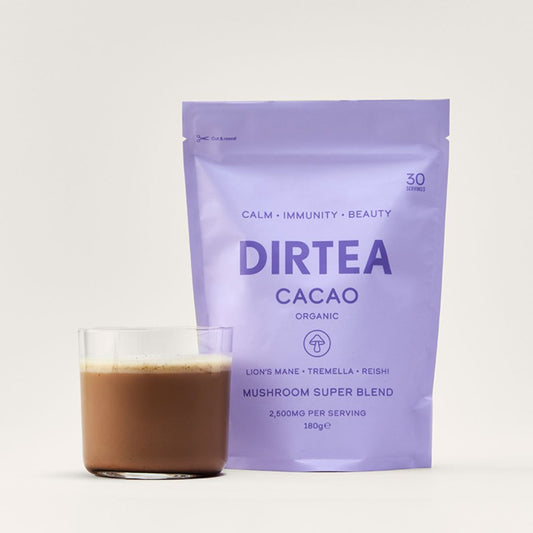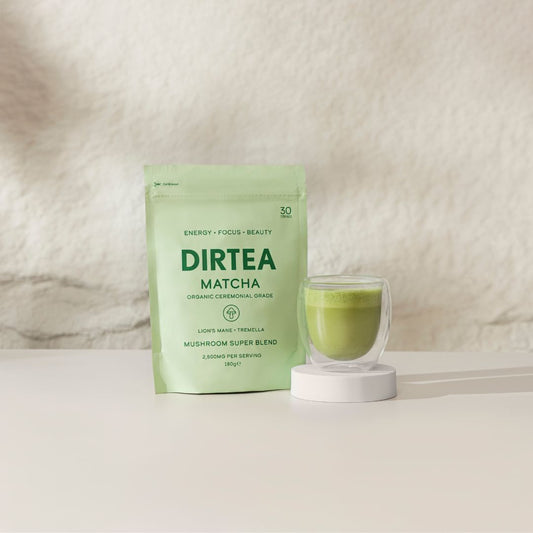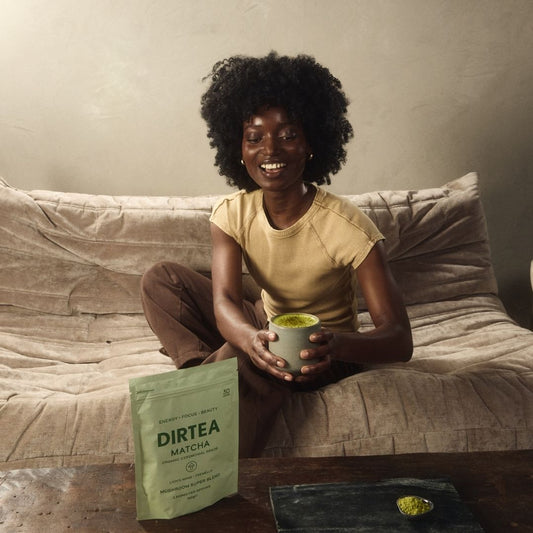The Ancient Wisdom of Fungi
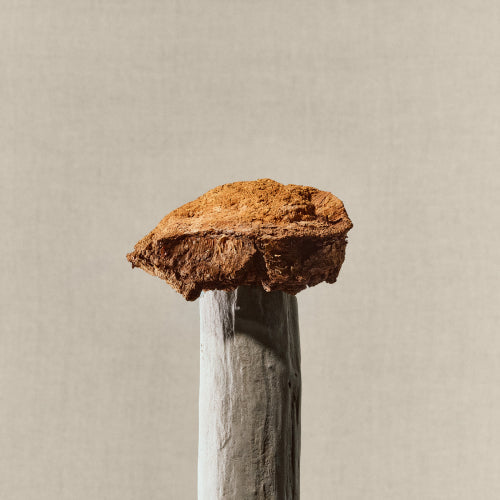
Share
Before the age of supplements and superfood smoothies, people were already turning to mushrooms for support. Across centuries and continents, fungi have played a role in helping us stay focused, energised, balanced, and generally healthy. They’ve been brewed, dried, and mixed into all sorts of rituals for their powerful benefits - long before we had the science to explain why.
Today, we’re just picking up where our ancestors left off. Functional mushrooms like Lion’s Mane, Reishi, Chaga, Cordyceps, and Tremella have stood the test of time. And thanks to modern methods, they’re now more accessible - and more potent - than ever. And yes, a lot tastier too.
A Brief History of Functional Mushrooms
Functional mushrooms have been around longer than recorded history - quietly thriving beneath the forest canopy and in high-altitude terrains. Their roots can be traced to ancient medical systems across the globe:
-
China: Reishi and Tremella were key players in Traditional Chinese Medicine, used to promote longevity, vitality, and beauty.
-
Japan: Lion’s Mane was embraced by Buddhist monks for enhancing focus and spiritual clarity.
-
Siberia and Northern Europe: Chaga was brewed into earthy teas to survive harsh winters and support immunity.
-
Tibet and Nepal: Cordyceps was discovered by herders and quickly adopted for energy and stamina at high altitudes.
These mushrooms weren’t just local remedies - they were passed down as knowledge, often closely guarded. And now, they’re having their global moment, backed by both their long-standing heritage and newfound research.
What Makes a Mushroom 'Functional'?
Not all mushrooms are created equal. When we say “functional mushrooms,” we’re talking about varieties that go beyond basic nutrition. These mushrooms offer potential health benefits - like cognitive support, immune modulation, or stress resilience - thanks to their unique bioactive compounds like beta-glucans, terpenes, and polysaccharides.
They’re not meant to replace medication or act as a miracle solution, but they can be part of a balanced, supportive routine that works with the body’s natural rhythms.
Find out more how to transform your routine with functional mushrooms.
Meet the Mushrooms
Functional mushrooms offer a solid, natural way to give your body and mind a bit of daily support. Let’s meet the main players.
Lion’s Mane – For Brain Power
Lion’s Mane (Hericium erinaceus) looks like something out of a fantasy film - fluffy, white, and totally unique. But don’t be fooled by its quirky appearance - this mushroom is all about brainpower.
Used in Traditional Chinese Medicine and by Japanese mountain monks, it was the go-to for keeping the mind clear and focused. Legend has it Buddhist monks used it to enhance meditation. Modern research suggests it may support Nerve Growth Factor (NGF), helping your neurons stay sprightly (1). In short, it’s brain food with a backstory.
Reishi – For Calm and Better Sleep
Nicknamed the “mushroom of immortality,” Reishi (Ganoderma lucidum) has been around the wellness block. Found in ancient Chinese scrolls and once reserved for royalty, it’s been calming minds and supporting immune systems for over two millennia.
Taoist monks were fans. So were emperors. These days, it’s your nervous system’s best friend - especially before bed. A warm mug of Reishi is basically a ‘do not disturb’ sign for your brain (2).
Chaga – For Immune Support
Chaga (Inonotus obliquus) is the gnarly-looking mushroom you didn’t know you needed. It grows on birch trees in cold, wild places like Siberia, and Indigenous tribes have brewed it for centuries to help them thrive through brutal winters.
It’s loaded with antioxidants and has earned nicknames like "black gold" and "forest coffee" - partly because it’s a deep, earthy brew that gives your immune system some love without the caffeine crash (3).
Cordyceps – For Energy and Endurance
Cordyceps (Ophiocordyceps sinensis) might just be nature’s pre-workout. Discovered by yak herders in the Himalayas who noticed their animals getting unusually peppy after eating it, it quickly gained its reputation as a natural performance booster.
It became so valuable in ancient China that it was gifted to emperors and used by elite athletes. Today’s Cordyceps militaris is cultivated and still packs the same energy-supporting punch - think of it as a steady lift, not a sugar spike (4).
Tremella – For Skin Hydration
Tremella (Tremella fuciformis) is the glow-up mushroom. Nicknamed “snow fungus” or “silver ear,” it’s been part of Chinese beauty routines for centuries. Rumour has it, Tang Dynasty beauty icon Yang Guifei swore by it.
It holds water like a sponge - some say even better than hyaluronic acid. So if your skin’s looking a little lacklustre, this mushroom might just be your secret weapon (5).
Functional Mushrooms: Then vs Now
So how exactly did people use mushrooms way back when? Spoiler: there were no gummies or super blend coffees.
Then:
Ancient civilisations took a very hands-on approach. Mushrooms were foraged (often with expert knowledge passed down through generations), dried in the sun, and brewed into teas or decoctions. Sometimes they were simmered in broths, mixed with wine, or even burned as incense in rituals. There were no guarantees on potency, and the preparation could take hours - or even days.
In Traditional Chinese Medicine, mushrooms like Reishi were ground and simmered for hours to extract their compounds. Siberian tribes steeped Chaga chunks in boiling water for immune support. While Tibetan healers dried wild Cordyceps and blended it into tonics.
Now:
We’ve come a long way from boiling mushrooms on a fire for hours (though hats off to our ancestors). These days, we use dual-extraction methods - pulling out both water- and alcohol-soluble compounds for a full-spectrum extract. It means you get more of the good stuff, quicker, and in a more convenient format.
At DIRTEA, we take that a step further with clean, Organic Certified, third-party tested products that are up to 8x more potent than average. Pure powders, super blends, and gummies have replaced the bubbling pots, but the intention remains the same: support the body, naturally.
Modern convenience. Ancient roots. A perfect pairing.
Myths, Legends & Mushrooms
Mushrooms have always had a bit of mystery about them - and with that comes a little folklore.
-
Reishi was known in ancient China as the “mushroom of immortality.” It was said to grow in the homes of the immortals and could only be found by those pure of heart (no pressure then).
-
Cordyceps was believed to be a divine gift, first discovered when herders noticed their yaks becoming unusually energetic after munching on wild fungi at high altitudes.
-
Tremella, with its snow-white, jelly-like appearance, was linked to beauty and youth. Legend has it one of China’s most celebrated royal beauties used it daily to maintain her glow.
These stories may not hold up under peer review - but they speak to the reverence people had (and still have) for mushrooms. They weren’t just healing tools - they were revered, magical, and a little bit mystical.
Summary
Functional mushrooms aren’t just the latest thing to stir into your morning tea - they're a living connection to ancient wisdom. For centuries, people have turned to fungi to help with focus, calm, energy, immunity, and glow. And thanks to modern techniques, we’re able to enjoy those same benefits - faster, cleaner, and tastier than ever.
Whether you’re brewing a cup of Reishi before bed or reaching for Lion’s Mane to power through your workday, you’re tapping into something timeless. These mushrooms have been supporting humans for generations - and now, they’re here for you.
Explore DIRTEA Functional Mushrooms
At DIRTEA, we take nature’s oldest allies and bring them into your everyday routine. No fillers. No fluff. Just mushrooms in their most effective, convenient form. So whether you want to sip your way to better focus or build a calming evening ritual, there’s a DIRTEA mushroom ready to do its thing.
Explore the DIRTEA collection today.
References
-
Mori, K., Inatomi, S., Ouchi, K., Azumi, Y., Tuchida, T. (2009). Improving effects of the mushroom Yamabushitake (Hericium erinaceus) on mild cognitive impairment: a double-blind placebo-controlled clinical trial. Phytotherapy Research.
-
Wachtel-Galor, S., Yuen, J., Buswell, J.A., Benzie, I.F.F. (2011). Ganoderma lucidum (Lingzhi), a Medicinal Mushroom. Herbal Medicine: Biomolecular and Clinical Aspects. [Online] Available at: https://www.ncbi.nlm.nih.gov/books/NBK92757/
-
Shashkina, M.Y., Shashkin, P.N., Sergeev, A.V. (2006). Chemical and medicinal properties of Chaga (Inonotus obliquus). Journal of Medicinal Mushrooms.
-
Holliday, J., Cleaver, M., & Loomis-Powers, M. (2004). Analysis of quality and techniques for hybridisation of Cordyceps sinensis. International Journal of Medicinal Mushrooms.
-
Park, Y.K., et al. (2007). The effect of Tremella fuciformis polysaccharides on skin hydration and viscoelasticity in humans. Journal of Cosmetic Science.
H2: The History of Mushrooms FAQs
How long have functional mushrooms been used in traditional medicine?
Functional mushrooms have been used for thousands of years. Reishi and Tremella appear in Traditional Chinese Medicine texts dating back over 2,000 years, while Chaga was used by Siberian tribes and Cordyceps by Tibetan communities for centuries.
What cultures first used functional mushrooms?
Functional mushrooms have roots in ancient Chinese, Japanese, Tibetan, and Siberian traditions. Each culture used them in unique ways - for example, monks in Japan consumed Lion’s Mane to support meditation and focus, while Siberian tribes brewed Chaga for immune support.
Were mushrooms considered sacred or spiritual in ancient cultures?
Yes, many functional mushrooms were considered sacred. Reishi was often referred to as the “mushroom of immortality” and was associated with spiritual growth and longevity in Taoist practices. Tremella was linked to beauty and purity, often favoured by royal women.
How did people traditionally prepare functional mushrooms?
Traditionally, mushrooms were dried and brewed into teas or decoctions. Some were simmered in broths for hours to extract their benefits, while others were ground into powders or blended into tonics.




